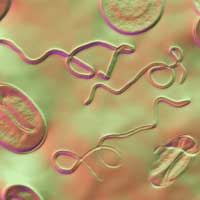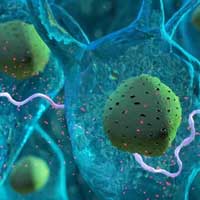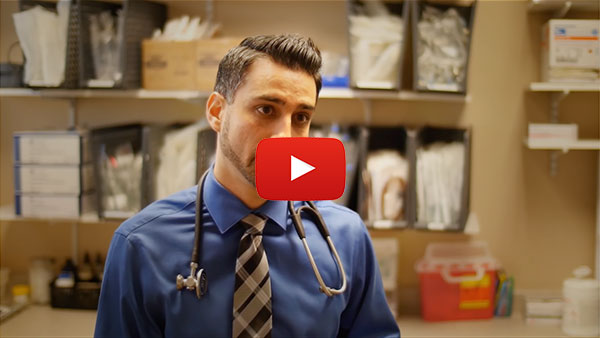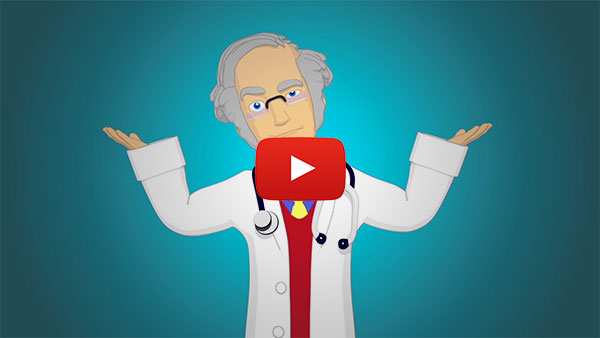Missing the Mark with Chronic Lyme Disease

It is important as one of the nation's leaders in chronic Lyme disease complex, and after nearly two decades of helping patients, to point out how the CDC has missed the mark entirely with their current study and publication on prolonged treatment for Lyme disease. Unfortunately this information is quite literally too little and too late. Too little, because it is old information and too late, because it offers nothing new to help the many patients that have been suffering. On its face, this small study is designed to discourage physicians from helping their patients.
Disclaimer: Individual results will vary. Envita makes no guarantees for outcomes. Each patient case is unique. Please consult your doctor before making any changes to your medical treatment. Not every patient is a candidate for care or achieves these results. Treatments used in this case may not all be FDA approved for the treatment of this condition.
Recently, Centers for Disease Control and Prevention (CDC) released statements regarding the treatment of chronic Lyme disease based on a few published studies on a small number of patients and conducted a case study that ultimately provided no new information not already known by most Lyme literate physicians. In the statement, the CDC states that antibiotics were shown not to provide long-term benefits for chronic Lyme patients and rather gave rise to other complications such as CDIF infections. The CDC inferred, based on these outcomes, that doctors should not treat these patients but rather refer them to other specialists. Referring to the same old rheumatology, psychiatry, pain management, and neurology treatments that never eliminate the root cause which is the infections. This lack of proper treatments ultimately leaves the patients in a life-time of suffering and in a condition that only worsens over time. That is exactly the opposite direction to health and healing that our team is dedicated to achieving with our patients. But the devil is in the details, and to the untrained physicians and patients, the CDC statements sound reasonable and conclusive. However, IV antibiotics were never effective for numerous reasons as we mentioned in our peer-reviewed published article from 2014 in the Open Journal of Medical Microbiology Chronic Lyme Disease: Persistent Clinical Symptoms Related to Immune Evasion, Antibiotic Resistance and Various Defense Mechanisms of Borrelia burgdorferi. It is something we hear daily from our new patients when they first walk in, the antibiotics they had taken in the past only provided temporary relief. Therefore, the important question and case study work should help answer why the IV antibiotics alone do not work. This is a topic in which we have done a great amount of medical work and have been speaking and teaching about for years. In fact, we wrote about this: Top 7 Overlooked Factors for Treating Lyme Disease.
We will discuss in this article why personalized integrative medicine and a detailed diagnosis and treatment plans make all difference for chronic Lyme disease patients. As clinicians working in the field, we believe the CDC chose this study with a pre-established belief in the results but this mindset is only a distraction to real advancements that are being made in treating this disease. Let's take a look at the facts.
Chronic Lyme disease Complex, Not Just Chronic Lyme
Patients with chronic Lyme never have just the one infection, they have multiple infections that have gone untested and untreated for extended periods of time. Antibiotics are not even effective for many of these infections, such as with viral, fungal, and parasitic infections.
When chronic Lyme disease is mentioned, most often they are actually referring to chronic Lyme disease complex which involves the spirochete which causes Lyme, Borrelia burgdorferi, and also associated co-infections, which enter the body with Borrelia in the initial tick bite: Babesia, Ehrlichia, Bartonella, Rocky Mountain Spotted Fever etc. Chronic Lyme disease complex can also include secondary infections which occur as a result of a compromised immune state. This is important to keep in mind because antibiotics do not work against viral infections and similarly, fungal infections require antifungal medication and so on. The secondary and co-infections must be identified in order for treatment to be effective. This is the number one reason why antibiotics alone cannot be used to treat these patients.
It is important to understand that Borrelia has a number of mechanisms both for evading and distracting the immune system and that Borrelia is capable of burrowing and spreading throughout most of the body's tissues, including the blood-brain barrier. Antibiotics cannot easily pass the blood-brain barrier which allows borrelia and others infections like babesia to attack the brain and central nervous system unimpeded. Borrelia implants itself in tissues and within individual cells to avoid being consumed and lysed by the immune system. The microbe is also adept at countering the adaptive immune system through constant variation in its surface proteins, or antigens, a feat enabled by its complex single chromosome and its circular DNA plasmids. Usually, by the time the body can create antibodies to target Borrelia, its surface has already changed so much that the new antibodies are no longer effective. In serum, Borrelia has the ability to inactivate C3, a protein marker which would normally trigger the immune response for free floating microbes. When Borrelia does find a place to settle down and multiply, the microbe secretes a protein mesh called biofilm which shields it and its progeny from direct exposure to many antibiotics and other compounds that might otherwise harm the infection. Our team has published on this subject extensively and we have assembled a great deal of information on the biology and survival mechanisms used by Borrelia in our published study Borrelia burgdorferi: Cell Biology and Clinical Manifestations in Latent Chronic Lyme.
While the spirochete Borrelia is responsible for causing primary Lyme disease, it is usually not the only factor to consider when approaching treatment for chronic Lyme disease, or more commonly, Lyme disease complex. When a tick bites, various bacteria and parasites enter the wound besides just Borrelia. These simultaneous infections are called co-infections and can include Babesia, HHV-6, Epstein-Barr, and Rocky Mountain Spotted Fever, just to name a few. These co-infections are able to gain a firmer foothold in the body and potentially become chronic since Borrelia excels at distracting and depressing the host immune system. Secondary infections can also be picked up after the initial bite due to a depressed immune response from the infected person. The result is a condition that is chronic and can linger for months or even years, typically worsening over time without proper treatment. In our published study, Chronic Lyme Disease Complex and Its Commonly Undiagnosed Primary and Secondary Co-Infections, we discuss the various co-infections which can coincide with Lyme to form Lyme disease complex. The presence of multiple different infections in the body simultaneously seriously complicates any potential treatment as is discussed below. Many of these other infections complicate treatment and increase the risk for auto-immune diseases depending on the patient's genetic background and can also be a precursor to various cancers. Treating these infections in their totality is essential to full recovery and for the patient to achieve health which is why often antibiotics alone don't work clinically.
Single Antibiotic Treatments Inevitably Fail against Lyme Complex
The organism Borrelia has multiple strategies for evading, inactivating, and depressing the immune response including the ability to insulate itself inside tissues and biofilm to avoid contact with substances which might kill it, like antibiotics. A critical flaw with the four randomized trials funded by the CDC to study chronic Lyme disease is that they all used a single antibiotic regimen (ceftriaxone) compared against placebo. As well, this is not typically the antibiotic of choice with a resistant chronic Lyme. Patients' co-infections also need to be identified in a case of chronic Lyme disease complex. Each patient should receive a personalized regimen based on their infection profile, neurological involvement, immune state and genomics. Also, their ability to eliminate toxins from the body should be evaluated.
With the advent of multi-drug resistant (MDR) strains of bacteria, we have found in our clinical experience that chronic Lyme disease will not respond effectively to antibiotic regimens without the addition of MDR blockers. In chronic patients, these infections have often become “super bugs” and blocking MDR is essential. Also, multiple organisms can survive and propagate within biofilm communities formed by the Borrelia bacteria. This enables Lyme disease to essentially shield other infections from treatment. Adding compounds which are designed specifically to break up biofilm is part of the treatment often needed to help chronic Lyme disease complex. The signs and symptoms of chronic Lyme and the ways in which it evades treatment by antibiotics is outlined in our published paper Chronic Lyme Disease: Persistent Clinical Symptoms Related to Immune Evasion, Antibiotic Resistance and Various Defense Mechanisms of Borrelia burgdorferi.
Another factor which is not considered in any of the published studies listed by the CDC is the genetic variation in the patients. Each person responds to medication in a slightly different way. A lot of this variation is due to Single Nucleotide Polymorphisms (SNP's) which also make up a large portion of physical differences between humans. SNP's will cause each patient to metabolize drugs at a greater or lesser rate than the "average person" which is an amalgamate based off of data from thousands of studies rather than a patient's own particular medical history. Treating patients based off national averages is always risky, which is why people continue to have adverse reactions to medications prescribed by doctors. This personalized testing is essential for several reasons. Finding blocked genes and variations in HLA-DR are highly common in chronic Lyme disease patients, which is why this disease is often linked to autoimmune diseases. Knowing how to access a genetic profile in the Lyme patient is essential to better tailor the therapy and support pathways of elimination as dealing with biotoxins and neurotoxins is a complex problem.
Other than the terribly flawed placebo-driven studies released, the CDC would have you believe that treatments for chronic Lyme disease complex are risky and potentially life threatening. Below, we point out that...
Treatments for Chronic Lyme Are Not Any More Dangerous than Other IV Therapies
The CDC listed five cases of patients who sought treatment for chronic Lyme disease and experienced adverse events due to intravenous therapy. While the article seems to imply that the resulting infections were due to the treatment for chronic Lyme disease, an impartial reader will notice that each of these adverse events occurred after the installation of a permanent port, in particular PICC's or Peripherally Inserted Central Catheter. The PICC is essentially an open line directly into a central artery near the heart and thus is extremely prone to infection when proper care is not adhered to. That is why at Envita, our physicians and specialized nursing staff do not prefer to use PICC's with our patients. Instead, if the patient is to undergo extended intravenous therapy for their condition, an implanted subcutaneous port is recommended and we work with the best interventional radiologist to ensure safety. The implanted port is a soft silicone tube inserted below the skin into which a small needle can be used to deliver drugs in a similar way to a PICC. However, a subcutaneous port is covered by skin which makes it lower maintenance for the patient and reduces the risk of infection drastically. Our nursing staff works in this environment daily and excel at making sure patients ports are properly accessed and maintained.
Whenever the skin is broken for any reason, however, there is always a risk for infection, even in a hospital with trained staff; and nowadays, you may be at greater risk of a MDR infection while in a hospital than not. This risk is reduced when doctors and staff follow rigid sterilization protocols while adverse events tend to occur when discipline relaxes. While the risk continues over a greater length of time in treating a chronic ailment like Lyme, the risk does not inherently grow as a result of the duration and just like at any medical facility, the risks are managed with careful attention to detail and patient compliance. As a facility with many years of helping patients we rarely see any infections because our team is very good at what they do and our facility is clean.
There is nothing inherent about therapy for Lyme that places patients at greater risk than other kinds of treatment. The antibiotics and nutritional IV, immune modulators, phytotheraptics and other medications that are prescribed are commonly used as required. At Envita, we prioritize attention to detail and patient safety, that's why we personalize our treatments to each individual patient and are confident in our work and outcomes.
The articles released from the CDC seem to imply also that chronic Lyme disease is not even a real phenomenon at all and insist that other factors must be the cause for the patients' symptoms. However the CDC is sadly mistaken. In our many years of work with these infections, we know that they are the cause of many auto-immune diseases and neurological problems. The message the CDC wants everyone to take home is to get “real” medical care for your problem, to keep using pain medications, neurological drugs, steroids, and deal with being bed ridden while suffering and letting your health decline because the conventional approach is best. The fact is these infections are real and patients can improve. Real progress happens when you treat the cause of your disease and not just the symptoms.
Yet curiously, the CDC does not deny that these symptoms do exist and cause detrimental harm to people's lives, up to and including hospitalization for pain, fatigue, and neurological problems. The CDC does not discuss why, if Lyme disease is not a contributing factor to these symptoms, the patients do not recover after traditional therapy and why these cases continue to appear in areas prone to tick infestations. To dismiss out of hand a potential explanation with inadequate evidence is unusually irresponsible of this institution responsible for guarding the public against infectious agents. Therefore, in our professional opinion, it's too little (not enough helpful detailed information), too late (leaving patients to suffer and still question the cause of their illness). Maybe the CDC should read our published studies and look at our materials to help them better design studies for the future instead conducting studies of which they already know the outcomes only to mislead and misdirect the public. We make this statement as the CDC has had a very untrusting relationship with chronic Lyme disease issue in this country.
However, at Envita, we have taken the time to specialize and gather all available information about Lyme disease and its impact on the body. We are proud and blessed to see our patients return to health and we let our success stories speak for themselves. If you are interested in learning more about the risks of Lyme disease, feel free to give us a call at 1-866-830-4576 and one of our trained patient care coordinators will be more than happy to answer your questions. You can also learn more about Lyme disease at our webpage here.





















